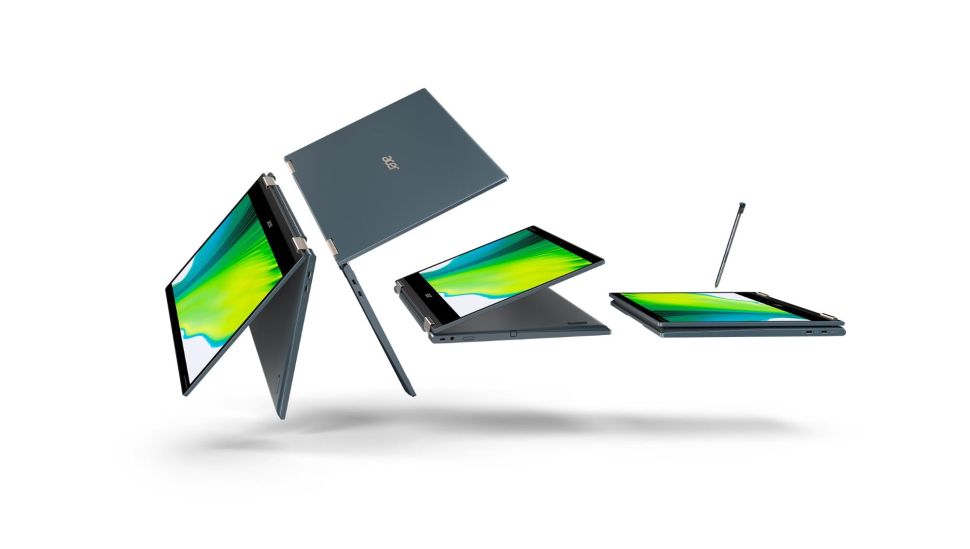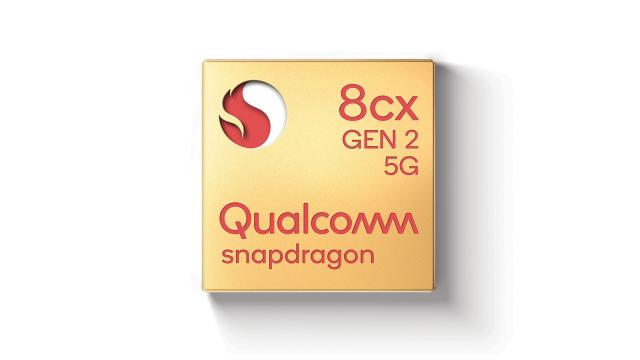Last year, Qualcomm made a big push into the notebook market with its first purpose-built laptop chip — the Snapdragon 8cx. And for 2020, Qualcomm is announcing the Snapdragon 8cx Gen 2 which offers new 5G connectivity along with improved AI and security, but not much in the way of added performance, which kind of makes it a headscratcher when Apple is launching a competing product later this year.
Now don’t get me wrong, adding support for 5G is important, especially as we move into 2021 and 5G networks become more widely accessible. And when you combine support for both sub-6GHz 5G and mmWave 5G along with newly added Wi-Fi 6 connectivity, laptops like the upcoming Acer Spin 7 (which is the first system to feature the new Snapdragon 8cx Gen 2 chip), should be well equipped for mobile productivity regardless of what kind of connection you’re relying on.
Qualcomm says that by using its AI Engine, the Snapdragon 8cx will provide faster and more power-efficient AI performance for things like “stronger video conferencing interactions through tools such as accelerated eye contact and expressive avatars.” Features like that might make people’s endless string of video meetings a little less boring, but I highly doubt people are going to buy a computer to have more expressive digital avatars.

It’s sort of the same situation with security, with Qualcomm saying the Snapdragon 8cx Gen 2 has improved “security and manageability for enterprises, small businesses, and education,” with the nature of always-on connected PCs giving IT admins quick access to remote machines, wherever they happen to be. A nice feature, but not a must-have for the average person out to buy a laptop.
When it comes to performance, Qualcomm says the Snapdragon 8cx “delivers over 50 per cent greater system-wide performance and battery life versus competing solutions.” That’s pretty much the same line Qualcomm trotted out last year and those competing solutions haven’t changed much (though that will likely change by the end of the year). At its core, the Snapdragon 8cx Gen 2 is pretty much the same chip from last year, but with a few tweaks and new wi-fi and 5G modems bolted on.
And for me, that’s a bit worrying because the Snapdragon 8cx wasn’t… especially fast. The two biggest complaints about Windows on Snapdragon machines were poor app compatibility and lacklustre performance after the Snapdragon 8cx found its way into a number of high-profile computers last year including the Galaxy Book S, and the Surface Pro X (which had a Microsoft SQ1 Chip that was heavily based on the Snapdragon 8cx).
Admittedly, there’s only so much Qualcomm can do about poor app compatibility, as that’s something that mostly falls on Microsoft and third-party software developers to improve by including better support for ARM 64 in apps. But it’s also kind of a chicken and egg problem. Developers don’t want to spend time porting apps over to ARM64 when the number of users with ARM-based Windows laptops is incredibly small.
At the same time, it’s hard for laptops makers to invest a lot of money in making new ARM-based Windows laptops when the lack of compatible apps results in a poor user experience. However, if developers see more powerful silicon become available for Windows on Snapdragon machines, they might be more inclined to port over more x86 apps to ARM 64, particularly if they knew these new ARM-based Windows laptops had the guts needed to run more sophisticated programs like video editing apps or modelling suites with similar levels of performance.
This is what makes the Snapdragon 8cx Gen 2’s speed (or lack thereof) so important. At the very least, improving overall computing power could address some of the sluggishness you experience on Windows on Snapdragon systems by simply brute forcing some of the emulation used to make non-native ARM apps work Windows.
For the handful of UWP apps that have been ported to work on ARM, performance isn’t an issue. The problem is the vast majority of “legacy” apps that haven’t been ported over. Those native x86 Win32 apps are forced to run inside an emulation layer to get them to work on ARM-based Windows systems, resulting in a performance overhead that means a system needs extra computing power for an app to run as smooth on ARM as it does on an x86 machine. That’s a struggle currently, and this second generation of the 8cx doesn’t seem to solve it on paper.
Let’s not even discuss the 64-bit x64 Win32 apps, which aren’t supported on ARM at all.
Regardless, the big concern is that with no significant performance improvements for the Snapdragon 8cx Gen 2, it sort of feels like Qualcomm’s new laptop chip is treading water. And in a time when Apple has announced its big switch to homegrown ARM-based A-series chips for future Macs and AMD has made major strides in the performance of its chips compared to Intel, performance matters. Better connectivity and tweaks to AI and security are nice, but standing pat on performance doesn’t feel like a great place to be.
